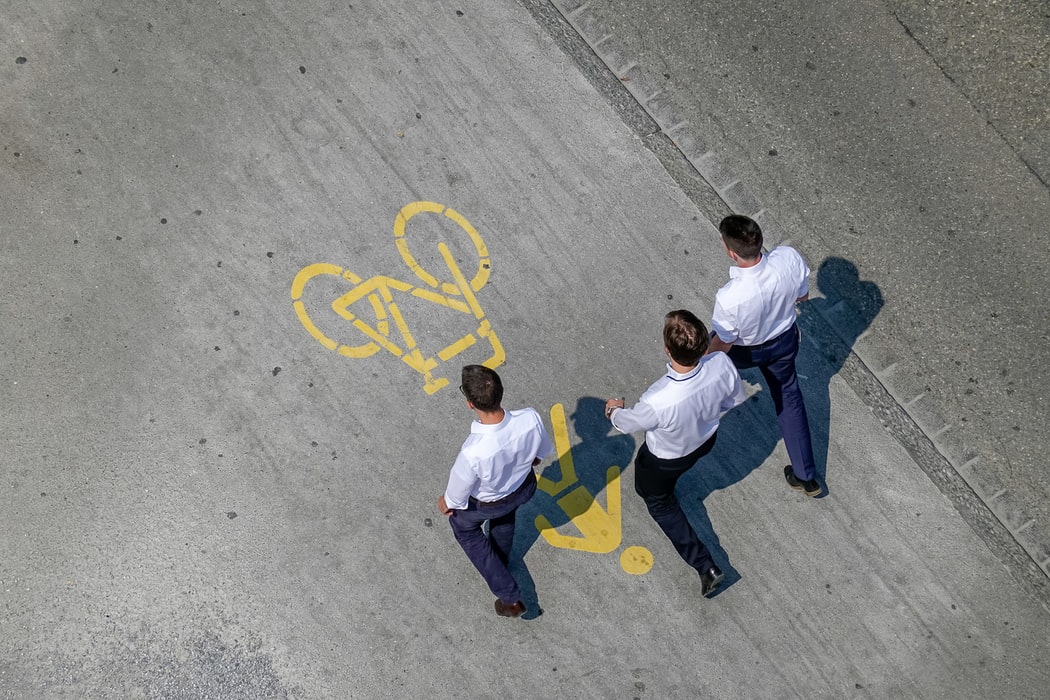Katariina Kiviluoto & Marjukka Parkkinen
In the third part of STYLE webinar, panellists Matti Hirvonen (Executive Director, Network of Finnish Cycling Municipalities, Finland) and Professor Billie Giles-Corti (Director, RMIT University Melbourne, AU) discussed siloed physical activity and various ways in which moving and physical activity are seen as an additional form of activity separated from our daily lives and working environments. Thus, making, for example, walking and cycling a part of our everyday lives is the key. This is in line with the recently reformed Finnish recommendations for physical activity, which emphasise active modes as an important part of active daily lives.
Director Hirvonen argued that the promotion of cycling is actually rather simple: we should create a year-round cycling culture, where cycling is seen as a natural way to move.The more we see people cycle, the more normal it becomes. This is also a question of having the right mindset and attitudes towards cycling. Indeed, heavy snow and freezing temperatures have not hindered the cities of Oulu (situated in Northern Finland) and Joensuu (situated in Eastern Finland) from becoming the winter cycling capitals of Finland. Moreover, encouraging people of all ages to cycle is essential. For example, the city of Vantaa has introduced a year clock of active mobility which provides teachers, parents and school kids seasonal tips and useful examples for everyday cycling. Building a cycling culture benefits also greatly from humour: the city of Jyväskylä had a successful cycling promotion campaign, where people were asked to share their most ridiculous car trips. Adding more joy to cycling promotion and underlining the fun side is never a bad thing in creating a positive image of cycling, argued Hirvonen.
According to Hirvonen, car commuting is one of the most misused time resources we have: by spending so much time in our cars we miss a very convenient way of getting more exercise into our daily lives. However, enabling a cycling commuting culture requires not only encouraging examples, but also a well-functioning cycling infrastructure. Planning cities and municipalities, which support multimodality and physical activity (be it intentional or unintentional) should be a planning priority. Nonetheless, infrastructure investments and maintenance require political will and tools to support both decision-making and more long-term planning. Good examples of practical instruments for decision-makers are the HEAT tool and sustainable urban mobility plans (SUMPs) utilised by many European cities and municipalities to support the practical implementation of more future-orientated strategic visions.
Workplace culture and practices tend to be static as well. Physical activity is easily disregarded as a goal by both employers and employees in most workplaces where moving is not a part of the job. Professor Billie Giles-Cortiagrees that workplaces have a vital role in promoting physical activity and health. Both the ways in which we travel to workplaces and the time spent at workplaces matter. The level of physical activity at work depends on the type of employment, but policies and occupational norms play an important role as well, says Giles-Corti. Whereas policies have an impact on workloads and breaks, norms give signs on how people are supposed to behave at work. A deskbound boss reinforces a work environment where everyone sits by the desk.
How, then, could organisations promote active travel to workplaces and physical activity during the workday? Based on the Global action plan on physical activity 2018–2030: more active people for a healthier world report by WHO, Giles-Corti raises four important ways to encourage physical activity. Firstly, it is important to create societies that promote activity. At work, this means co-benefits beyond support for health and reduction in absenteeism. When an organisation promotes physical activity, employees feel that they are cared for. (We were impressed with Giles-Corti’s description of first-class bicycle facilities at RMIT!) Secondly, the ways in which environments are designed has an important role in how active people are. Office spaces may encourage incidental moving or make employers sedentary. Universal access is a necessary aspect to consider, since moving is not easy or possible for everyone, reminds Giles-Corti. Thirdly, it is important for workplaces to encourage people with adequate facilities or by creating opportunities to move or organise activities. Finally, workplaces should enhance active systems with e.g. incentivising active travel instead of private cars.
This is the third of four thematic blog posts about the STYLE webinar.
- STYLE webinar blog #1: Promoting healthy mobility with knowledge and decision-making
- STYLE webinar blog #2: Design to support physical activity
- STYLE webinar blog #3: Integrating physical activity to everyday lives
- STYLE webinar blog #4: Silver bullets, lifestyles, feelings and equality enabling physical activity
Further information, recording and slides from the webinar here.
– –
Photo: Etienne Girardet on Unsplash

